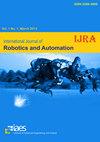医疗保健中的机器人过程自动化综述
IF 1
4区 计算机科学
Q4 AUTOMATION & CONTROL SYSTEMS
International Journal of Robotics & Automation
Pub Date : 2019-01-08
DOI:10.15406/iratj.2019.05.00164
引用次数: 3
摘要
机器人流程自动化(Robotic process automation, RPA)是基于软件机器人或人工智能(AI)工人概念的一种新兴的业务流程自动化技术形式RPA是一种基于软件的自动化方法,它通过理解现有的流程和实践来实现业务流程的自动化。从本质上讲,它是一种软件,它模仿虚拟的人力资源,执行任务和活动,这些任务和活动在本质上是重复的,减少了人类在过程中的参与。今天的商业世界竞争非常激烈,每个人都想领先于竞争对手以获得优势。因此,当某些重复过程自动化时,RPA技术被证明在提高业务机构的盈利能力和效率方面是有效的。这种类型的自动化有助于人类员工专注于更关键的任务,更具创新性,并投入时间来提高他们在该领域的知识和技能。计划、实施和监测与评估是任何RPS项目的三个主要阶段。RPA被认为是该技术的一个重要的技术演变,因为新的软件平台正在出现,这些平台足够成熟、有弹性、可扩展和可靠,可以使该方法在大型企业中使用研究人员认为,在未来十年左右的时间里,一旦技术变得更加成熟和稳定,RPA将在全球劳动力中迎来新一轮的生产力和效率提升RPA被证明是未来的技术,它的目标是提供一个可持续的解决方案,降低成本和交付时间,提高业务流程的质量、速度和操作效率。本文章由计算机程序翻译,如有差异,请以英文原文为准。
Robotic process automation in healthcare-a review
Robotic process automation (or RPA) is an emerging form of business process automation technology based on the notion of software robots or artificial intelligence (AI) workers.1 RPA is software based automation approach which automates the business processes by understanding the existing processes & practices. In essence, it is software which mimics the virtual human workforce and performs the tasks & activities which are repetitive in nature reducing the involvement of human in the process. Today the business world is extremely competitive and everyone wants to be ahead of its competitor for gaining the advantage. Hence, the RPA technology is proving to be effective in increasing profitability, efficiency of the business houses when certain recurrent processes are automated. This type of automation help the human employees to focus on more critical tasks, be more innovative and devote time to enhance their knowledge & skills in the domain. Planning, Implementation and Monitoring & Evaluation are the three major phases of any RPS project. RPA is considered to be a significant technological evolution of this technique in the sense that new software platforms are emerging which are sufficiently mature, resilient, scalable and reliable to make this approach viable for use in large enterprises.2 Researchers opine that RPA will usher in a new wave of productivity & efficiency gains in the global workforce once the technology becomes more matured and stable in the coming decade or so.3 RPA is proving to be the technology of future and its goal is to provide a sustainable solution that reduces costs and delivery time, improves quality, speed and operational efficiency of a business process.
求助全文
通过发布文献求助,成功后即可免费获取论文全文。
去求助
来源期刊
CiteScore
1.20
自引率
44.40%
发文量
71
审稿时长
8 months
期刊介绍:
First published in 1986, the International Journal of Robotics and Automation was one of the inaugural publications in the field of robotics. This journal covers contemporary developments in theory, design, and applications focused on all areas of robotics and automation systems, including new methods of machine learning, pattern recognition, biologically inspired evolutionary algorithms, fuzzy and neural networks in robotics and automation systems, computer vision, autonomous robots, human-robot interaction, microrobotics, medical robotics, mobile robots, biomechantronic systems, autonomous design of robotic systems, sensors, communication, and signal processing.

 求助内容:
求助内容: 应助结果提醒方式:
应助结果提醒方式:


